Natural Environments
Published by marco on
Neverwinter Nights 2 is a role-playing video game coming to the PC sometime in 2006. It hasn’t been that long since a “check out these awesome screenshots” article[1], but I like screenshots. The last batch[2] were of a hyper-realistic racing game set in real cities around the world—a very angular, metal and concrete world. Neverwinter Nights 2 takes place in a much more organic, open world with trees, grass and other bits of nature as the main backdrop to the adventure.
Using Those Pipelines
As game developers expect the average graphics card to have more and more pipelines and be capable of applying more and more rendering passes per cycle, the quality—and realism—increase accordingly. Trees use many more polygons to approximate nature; fog and dynamic lighting effects are layered to “soften” the entire scene. Even the grass in the foreground gets enough treatment so you really have to look hard to see where it repeats. This all helps the immersion and keeps the gamer in the fantasy world.
Day/Night Cycle
Many games these days are far more sophisticated than their predecessors, incorporating a day/night cycle and weather effects to light a scene. Gone are the days of a single, global light source for base lighting. The shot above shows a castle on a cloudy day, with a late sun illuminating it. Note how the organic greenery blends with the building structure instead of being strictly demarcated. Even the cloudy sky is no longer recognizable as a “skybox”, if indeed it’s even rendered that way anymore.
Believable Structures
Even close up, towns maintain their smooth blending with natural elements and. Roofs are somewhat slumped without looking polygonal and the ground is uneven and worn. Wood looks like wood and the sun sparkles off of lighter surfaces realistically. Boats in the distance disappear convincingly into the haze and all components throw soft, convincing shadows. One shudders to think of the number of rendering passes required for this scene—multiplied 30 or 40 times per second.
Single Rendering Model
The other screenshots are suspiciously empty of characters and creatures. In previous generations of game engine, the transition from character rendering to environment rendering is typically where immersion broke down. Characters floated and glided over rough surfaces, threw shadows through other objects, failed to cast shadows on other objects and were lit with completely different light sources than the envioronment. With the advent of the DOOM3 engine, that was all part of the past. More and more games have crossed over to rendering a scene as a single composite rather than as a statically lit environment with dynamically-lit models.
Note how the warthog characters above blend into the grass and how their shadows fall realistically on the uneven terrain. Even if the creature itself is too fantastical to be true, it’s so much easier to believe in when it interacts convincingly with the environment.
Role-playing isn’t really my thing, but I applaud this team’s efforts to bring natural environments to gaming—I don’t think I saw a single crate in the whole batch of screenshots. Bravo!
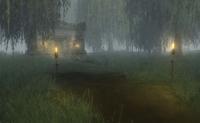
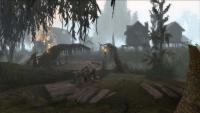
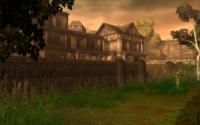
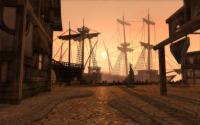
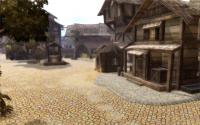
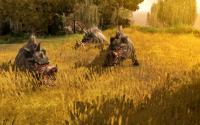
#2 − You’re not the only one…
… mine’s barely powerful enough to show the screenshot :-)